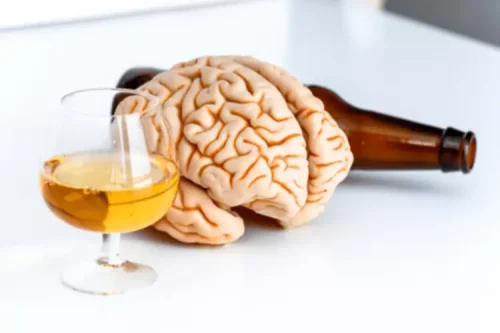
Genetic and environmental factors both contribute to the co-occurrence of the disorders. Obsessive-compulsive disorder (OCD) is one of the most common types of anxiety disorders. It involves uncontrollable obsessions that lead to repeated compulsions.
About Medical News Today

When you’re tired, you’re less likely to engage in social events since you’re already exhausted, and the mere thought of attending them causes more stress. DST can also slow metabolism and produce hunger hormones like leptin and ghrelin. The production of hunger hormones happens when your body doesn’t receive adequate sleep — think seven to nine hours per night. These hormones don’t direct you to the produce aisle of your grocery store either.
The Problem With Calling Someone an “Alcoholic”
Alcoholics build such a tolerance that they are no longer able to reach the high they once did, however, the lows they experience when not drinking become lower and lower. Other pursuits in life that once brought pleasure and balanced out the lows no longer do so. Alcohol use can progress to a point where the only thing that can relieve the withdrawal symptoms is more alcohol. When so many things in life become reminders of drinking, it becomes more and more difficult for people to not think about drinking. The same dopamine neurotransmitters affected by alcohol and other substances are also involved in the ability to feel pleasure from ordinary pursuits such as eating food, having sex, and engaging in social interaction. One of the difficulties in recognizing alcoholism as a disease is it doesn’t quite seem like one.
Steps to Take for Signs in Others
The hallmarks of anxiety disorders are excessive and recurrent fear or worry episodes that cause significant distress or impairment and that last for at least 6 months. People with anxiety disorders may have both psychological symptoms, such as apprehensiveness and irritability, and somatic symptoms, such as fatigue and muscular tension. Unhealthy alcohol use includes any alcohol use that puts your health or safety at risk or causes other alcohol-related problems.

Alcohol intoxication can disrupt this fine balance, disturbing the brain’s natural equilibrium, and long-term, chronic use forces a person’s brain to adapt in an effort to compensate for the effects of alcohol. Compounding the problem already experienced by those facing alcoholism is the progressive nature of the disease. In the early stages of alcoholism, one or two drinks may be all it takes to get the “song” to stop.
- A personalized treatment program will increase your chances for a successful recovery.
- It is proven effective in treating emotional dysregulation and self-destructive behaviors.
- Since the 1700s, physicians and researchers have sounded the alarm of alcohol addiction, but it wasn’t until 1954 that alcoholism was classified as a disease by the New York City Medical Society on Alcohol.
- In many cases, AUD increases the chances of having a co-occurring mental health condition.
- Integrated treatment approaches, including dual diagnosis treatment programs, can provide comprehensive care that addresses the interplay between the two conditions.
The progression of the disease is subtle, and usually takes place over such an extended period, that even the alcoholic themselves fails to notice the point at which they lost control and alcohol took over their life. The drinker is drinking to avoid pain, not to get those feelings of euphoria. When the drinking “song” starts playing in the mind of an alcoholic, they are powerless. The alcoholic didn’t put or want the thought there, the only way to get it to stop is to have another drink.
- Suicidal ideation and AUDs are very treatable, and a treatment center or drug rehabilitation program can help a person overcome these thoughts and lead a life of sobriety.
- Tolerance develops when the same amount of alcohol no longer produces the same effects.
- For others, drinking alcohol is learned from family culture or is genetic.
- Treatment of substance use disorders and mental illnesses often involves using cognitive behavioral therapy (CBT) strategies to enhance interpersonal and coping skills.
- The National Council on Alcoholism and Drug Dependence offers a detailed and complete definition of alcoholism, but the most simple way to describe it is a mental obsession causing a physical compulsion to drink.
The National Council on Alcoholism and Drug Dependence offers a detailed and complete definition of alcoholism, but the most simple way to describe it is a mental obsession causing a physical compulsion to drink. As noted previously, for patients with more severe disorders or symptoms, consult a psychiatrist (one with an addiction specialty, if available) for medication support, as well as a therapist with an addiction specialty for behavioral healthcare. See the Resources, below, for an NIAAA tool to help you locate these specialists. When psychosis is suspected, a general physical and neurological exam should be performed to exclude medical causes such as subdural hematoma, seizures, or hepatic encephalopathy—any of which may be a consequence of AUD. Again, it’s important to create a timeline of mental health symptoms and alcohol use and to collaborate as needed with mental health specialists for selection of pharmacotherapies and psychosocial interventions.

- If they use alcohol before bedtime, and especially if they shift their sleep timing on weekends compared to weekdays, they may have chronic circadian misalignment.
- These collective efforts help to create a safe environment for women and children, thus promoting their well-being through recreational activities, referrals to vital services for physical and mental health, and socio-economic assistance.
- If you keep drinking a lot of alcohol, it can cause more problems and make your depression and anxiety worse over time.
- More than a dozen states and the District of Columbia filed lawsuits against TikTok on Tuesday, saying that the popular short-form video app is designed to be addictive to kids and harms their mental health.
- There is also an increased risk of injuries from drowning, violent acts, and motor vehicle accidents.
A person can speak with a healthcare professional for guidance and support, especially someone specializing is alcoholism a mental illness in mental health. Other risk factors may include genetic or environmental trauma, such as childhood trauma, high levels of stress, and a lack of social support. If you have alcohol dependence, it can be unsafe to suddenly stop drinking. Talk to your doctor and work out a plan to safely lower your alcohol consumption. If you binge drink alcohol, your depression and anxiety may also worsen.
Undergoing treatment for AUD can be challenging, and there’s always a risk of relapse. Making such a significant life change can cause emotional turmoil, including guilt for past behaviors or burdening others. Motivational interviewing is an evidence-based method that can help people build motivation to reduce or abstain from alcohol. It’s effective because motivation and active participation are often key in AUD recovery. In its filings Tuesday, the District of Columbia called the algorithm “dopamine-inducing,” and said it was created to be intentionally addictive so the company could trap many young users into excessive use and keep them on its app for hours on end. https://ecosoberhouse.com/ TikTok does this despite knowing that these behaviors will lead to profound psychological and physiological harms, such as anxiety, depression, body dysmorphia and other long-lasting problems, the district said.
Relationship and Family Problems

Getting sober won’t matter if mental health issues like depression or anxiety are still causing the urge to drink. There is a strong connection between alcoholism and mental illness, and the two often coexist or influence each other. When both issues are present at the same time, it’s known as co-occurring disorders.
Leave a Reply